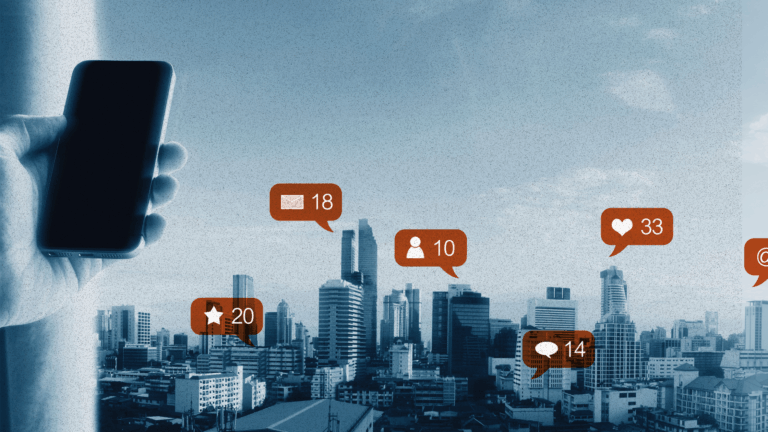A demand generator is any activity, feature, or initiative that actively drives interest in a product or service. These tools, strategies, or events bring awareness, engage audiences, and create a pipeline of potential customers, converting curiosity into genuine interest and, eventually, into sales. Demand generators can range from highly targeted marketing campaigns and content strategies to events, industry trends, and partnerships. At their core, they are designed to influence consumer behavior, encouraging them to explore, engage with, and invest in a brand’s offerings.
What is Demand Creation in Marketing?
Demand creation in marketing refers to the activities and strategies aimed at creating a desire or need for a product or service. Unlike demand fulfillment, which focuses on satisfying existing demand, demand creation is about generating interest where it may not exist yet. This can involve educating potential customers about a product’s benefits, positioning the brand as a must-have solution, and establishing a competitive advantage.
Effective demand creation highlights problems or desires that target audiences may not even realize they have. For example, Apple’s marketing campaigns often focus on demand creation by demonstrating how their products can improve productivity, creativity, and lifestyle, even before a customer has actively searched for such a product.
Demand Generation vs. Demand Fulfillment: Understanding the Difference
While demand generation focuses on creating interest and awareness, demand fulfillment is about satisfying existing customer demand. In other words, demand generation brings people to your brand, while demand fulfillment ensures that the product or service meets the expectations once the demand is there. Effective marketing strategies often include both—demand generation to attract potential customers, and demand fulfillment to meet their needs once they’re ready to buy.
By combining these two approaches, businesses can build a robust marketing funnel, attracting new prospects and ensuring they have a seamless experience that encourages repeat purchases and long-term loyalty.
Why Demand Generation Matters
Demand generation is more than just a buzzword; it’s a critical strategy for businesses looking to scale sustainably. Here’s why it matters:
- Building Awareness and Positioning the Brand
In any industry, visibility is key to success. Demand generation helps businesses get noticed, ensuring that potential customers are aware of their brand and its unique offerings. This is especially valuable in crowded markets, where standing out can be challenging.
- Creating a Pipeline of Engaged Leads
Demand generation does more than generate short-term interest; it builds a sustainable pipeline of qualified leads. These leads have already interacted with the brand and are more likely to convert into paying customers.
- Educating the Market
Many demand generation activities focus on educating potential customers about a product, service, or industry trend. This education helps to build trust, positioning the company as a thought leader and credible source of information. It’s an effective way to nurture relationships before a customer is ready to make a purchase.
- Driving Revenue and Customer Lifetime Value
By nurturing potential customers over time, demand generation helps businesses drive long-term revenue growth. Engaged customers who have been nurtured and informed are more likely to become loyal, repeat buyers, increasing their overall lifetime value to the business.
What Does Demand Creation in Marketing Entail?
Demand creation is a subset of demand generation, specifically focused on sparking interest and desire where it might not exist yet. It often involves:
- Storytelling: Developing an engaging story around the product or service to evoke an emotional response from the audience.
- Education: Offering valuable information that highlights the problem the product solves, making it relevant to the target audience.
- Social Proof: Using testimonials, case studies, and reviews to build credibility and show potential customers the value others have found in the brand.
Demand creation is particularly useful for new product launches or innovative services where consumers may not yet realize their need. By highlighting unique benefits and addressing pain points, demand creation turns passive viewers into curious leads.
The Three Pillars of Demand Generation
Effective demand generation strategies rely on three fundamental pillars:
- Brand Awareness
This is the starting point for any demand generation effort. It’s about reaching a wide audience and making a memorable impression. Tactics here may include social media campaigns, content marketing, SEO, and public relations efforts that introduce the brand to new audiences.
- Lead Generation
Once the audience is aware of the brand, the next step is to capture leads. This can be achieved through tactics like downloadable content (eBooks, whitepapers), gated webinars, or email signup offers. The goal is to gather contact information for future engagement.
- Customer Engagement and Nurturing
With leads in hand, companies must then nurture these potential customers through relevant, personalized content that keeps them engaged. Email marketing, retargeting ads, and follow-up webinars are effective ways to keep the brand top-of-mind, gradually guiding leads toward a buying decision.
What Does a Demand Generation Campaign Look Like?
A demand generation campaign is a cohesive marketing initiative designed to build brand awareness, engage leads, and drive conversions. Here’s an example of how a demand generation campaign might be structured:
- Phase 1: Awareness
The campaign kicks off with high-level content, such as blog posts, social media ads, and introductory webinars. These materials are aimed at educating a broad audience about the product or service. Content might cover industry pain points, benefits of the solution, or highlight unique product features. The goal here is to attract attention and encourage prospects to learn more.
- Phase 2: Lead Capture
Once prospects are aware of the brand, the campaign shifts to lead capture. This could involve offering an ebook, whitepaper, or a product demo in exchange for an email address. The goal is to gain the contact information of interested individuals who are open to learning more about the solution.
- Phase 3: Nurturing
With leads captured, the focus shifts to nurturing. This phase includes drip email campaigns, case studies, and testimonials to provide social proof. Personalized email sequences or targeted retargeting ads can keep the brand top-of-mind, helping leads progress toward a purchasing decision.
- Phase 4: Conversion Tactics
Finally, the campaign emphasizes conversion through offers, discounts, or direct consultations. By this stage, leads should be informed and motivated to make a purchasing decision. The campaign might culminate in a limited-time offer or a call with a sales rep to close the deal.
The success of a demand generation campaign depends on aligning content and messaging with the customer journey, so prospects are continuously engaged and encouraged to take the next step.
How Do On-Demand Generators Work?
On-demand generators refer to resources, tools, or platforms that allow businesses to meet customer needs instantly or at very short notice. Examples include ride-sharing services like Uber, content streaming platforms like Netflix, and meal delivery apps. These services generate demand by providing immediate access to solutions, and they thrive on the convenience and speed they offer to consumers.
For a business, implementing on-demand services or products can create a strong competitive advantage, especially in markets where convenience is highly valued. By addressing immediate needs, on-demand generators build a loyal customer base that appreciates the availability of solutions when they want them. This model also allows for data collection on customer preferences, enabling businesses to further tailor and improve their offerings.
Real-World Examples of Demand Generators
To see demand generation in action, consider these examples:
- Content Marketing for SaaS Companies: Many software companies use blog posts, eBooks, and webinars to create demand by educating potential customers about industry challenges and how their tools provide solutions.
- Events in the Hospitality Industry: Hotels often generate demand by hosting conferences, conventions, or local events, drawing visitors who might not otherwise stay at their property.
- Influencer Partnerships in Retail: Brands often work with influencers to introduce products to a wider audience, generating demand by reaching new demographics and adding credibility through trusted voices.
- Seasonal Promotions for E-Commerce Brands: E-commerce brands and retailers frequently run seasonal sales and holiday promotions, which create urgency and drive interest during key shopping periods.
Measuring the Impact of Demand Generators
To understand the effectiveness of demand generation efforts, it’s crucial to track key performance indicators (KPIs) such as:
- Lead Volume: The number of new leads generated from demand generation campaigns.
- Conversion Rate: The percentage of leads that convert into paying customers.
- Customer Acquisition Cost (CAC): The average cost to acquire a new customer through demand generation.
- Customer Lifetime Value (CLTV): The projected revenue generated by a customer over the entire time they remain a customer.
Analyzing these KPIs helps businesses refine their strategies, improving ROI and making demand generation efforts more cost-effective over time.
Building a Sustainable Growth Engine with Demand Generators
Demand generators are integral to a successful business strategy, creating pathways for sustainable growth by attracting and nurturing potential customers. From targeted campaigns to on-demand services, demand generation encompasses a variety of tactics that build awareness, capture interest, and foster customer loyalty. By understanding demand creation, the three pillars of demand generation, and how demand generation campaigns work, businesses can create strategies that don’t just meet market needs but actively shape them.
With a robust demand generation framework in place, companies can continuously build momentum, staying relevant in the eyes of their audience and positioning themselves as leaders in their field.
Start Generating Demand for Your Brand
Ready to drive real demand for your brand? At Kreative Media, we specialize in creating targeted demand generation strategies that build awareness, capture leads, and convert them into loyal customers. Let’s work together to amplify your growth and engage your audience in powerful ways. Contact us today to start your demand generation journey!




